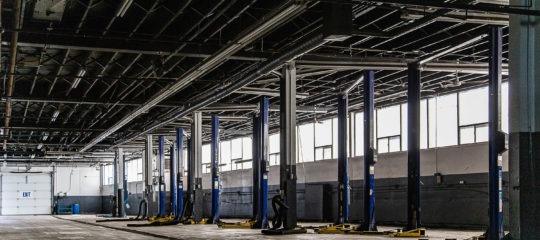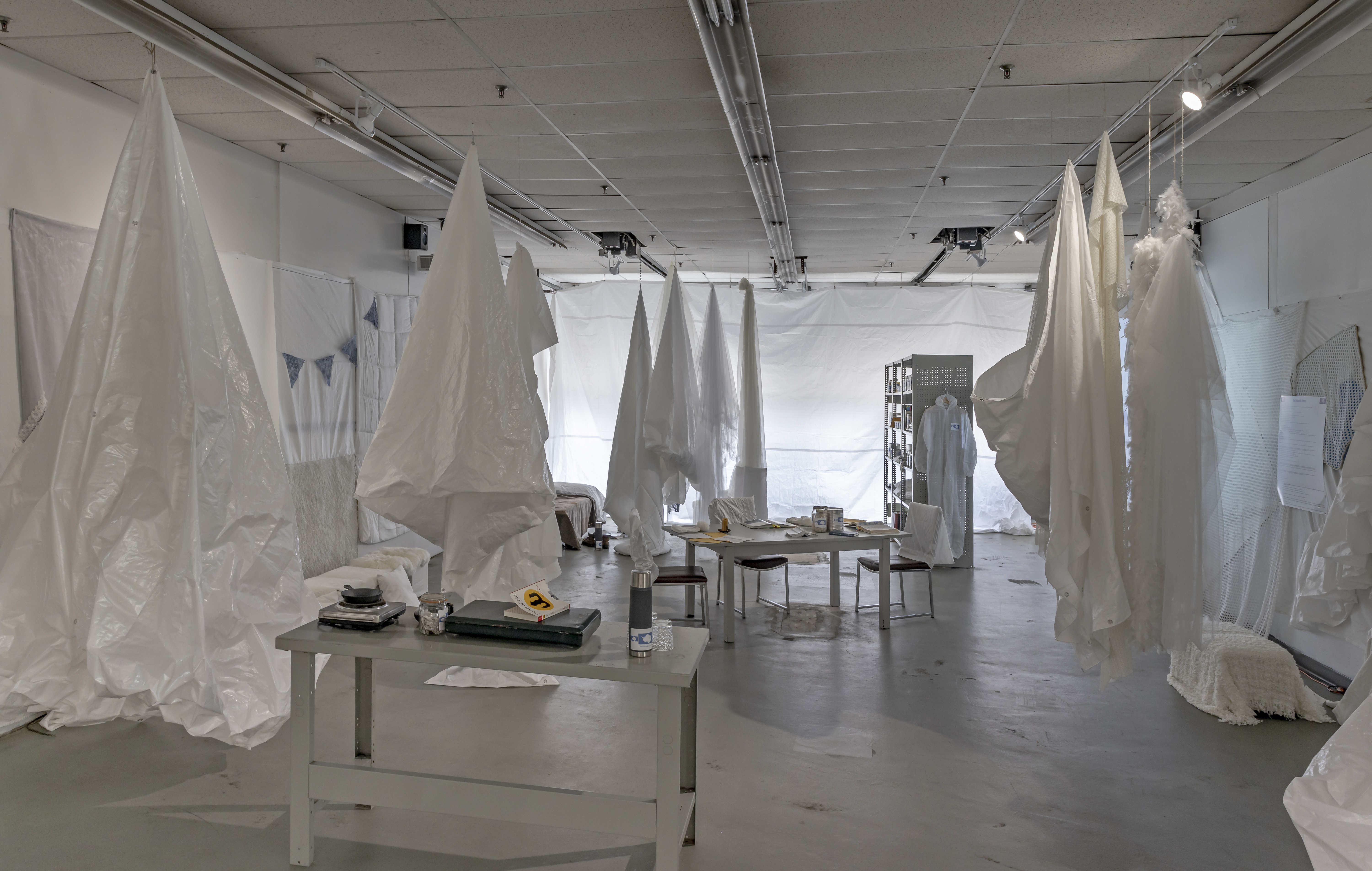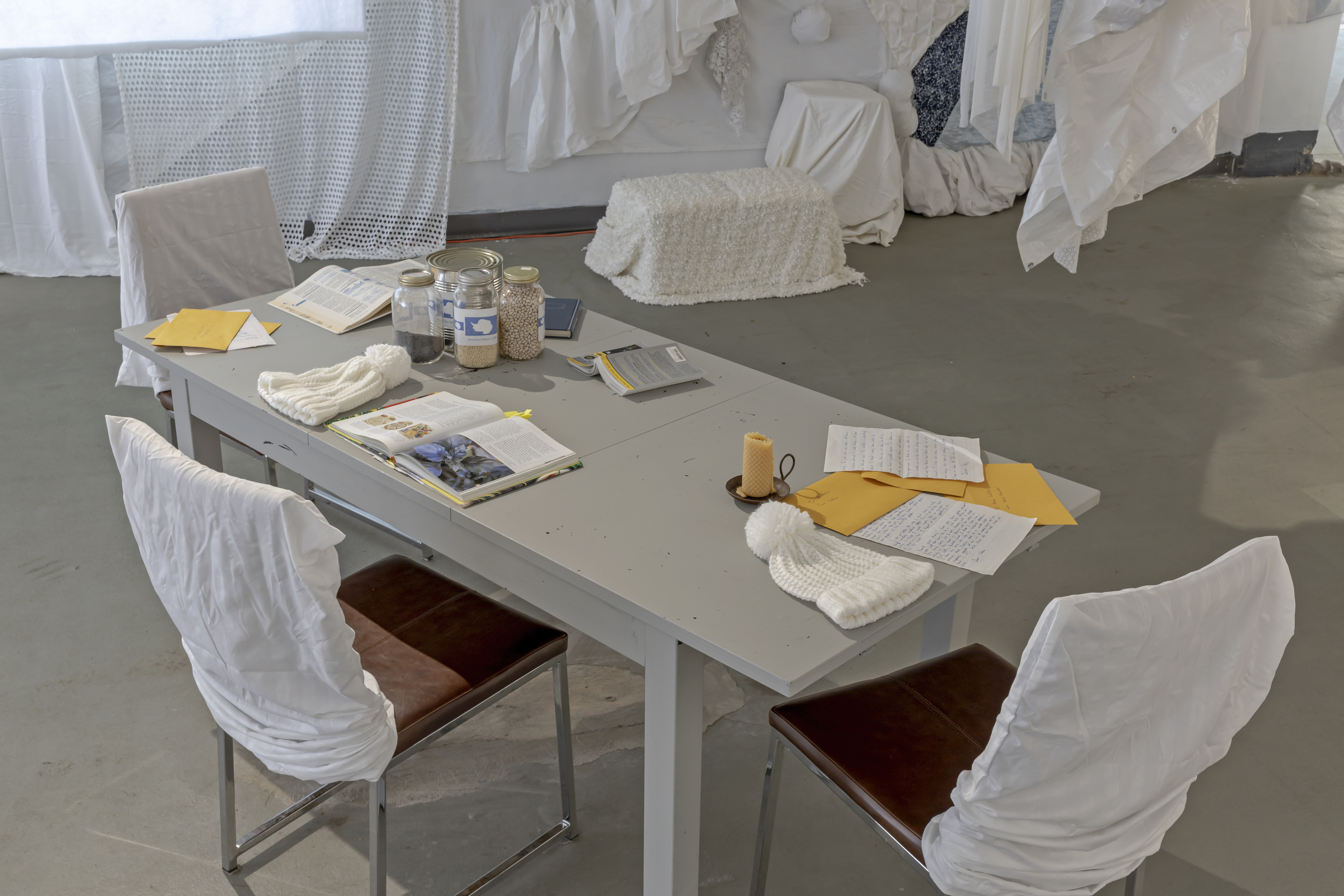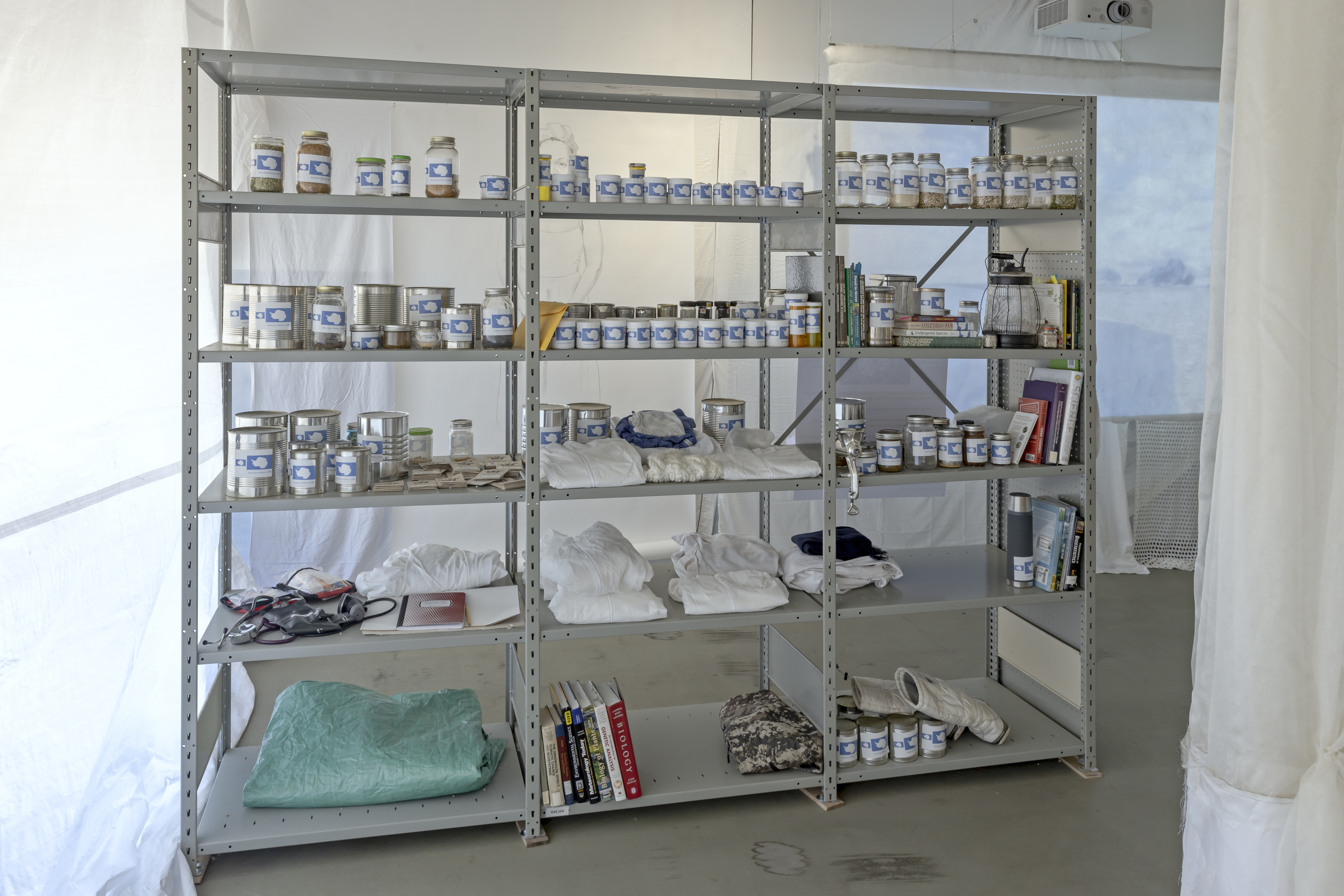September 21 – December 1, 2019
In a two-part installation at 259 Lake Shore Blvd E and Ryerson Image Centre’s New Media Wall, Ware imagines a world where racialized people have survived the “black death spectacle” writ large on the nightly news; survived the catastrophic impact of the Anthropocene; and survived the crushing effects of white supremacy. Drawing on the shared language of speculative fiction and political activism, Ware creates a portal that takes us to eleven characters in the summer of 2030, each with birthright citizenship to the only habitable place on earth: Antarctica. Their task? To begin terraforming for the new colony.
Videographer and Editor: Mishann Lau; Textile Support: Merlin Hargreaves.
Commissioned by the Toronto Biennial of Art and made possible with the generous support of the RBC Emerging Canadian Artist Program. Ancestors, Can You Read Us? (Dispatches from the Future), a related installation by Ware currently on view at the Ryerson Image Centre, is co-commissioned by the Ryerson Image Centre and the Toronto Biennial of Art.
Learn more about Syrus Marcus Ware’s practice by listening to the Short Format series on the Toronto Biennial of Art Podcast. Interviewed by Aliya Pabani, episode 3 with Ware is available HERE.
Bio
Syrus Marcus Ware (born in Montreal, QC, Canada; lives in Toronto, ON, Canada) is a Vanier scholar, visual artist, activist, curator, and educator. He uses painting, installation, and performance to explore social justice frameworks and black activist culture, and has shown widely in galleries and festivals across Canada. He is part of the Performance Disability Art Collective and a core team member of Black Lives Matter – Toronto. He has won several recognitions including the TD Arts Diversity Award (2017), Steinert & Ferreiro Award (2012), and “Best Queer Activist” from NOW Magazine (2005).
Learn more about Syrus Marcus Ware’s practice by listening to episode 3 of the Toronto Biennial of Art Podcast “Short Format”, available on Apple Podcasts, Google Podcasts, and Spotify.
Exhibition Site
259 Lake Shore Blvd East
The life of this nondescript building reveals the area’s economic history. Its first tenant in 1945, the Standard Chemical Company, produced methanol, formaldehyde, and charcoal. A railway line to the south tethered the site to the movement of goods. By 1954, the building was divided into a warehouse and a showroom, a configuration that remained intact over the course of various leaseholders, including oil and electrical supply companies and a series of car dealerships. (The advertising of its most recent tenant, Volvo, is still visible on the façade.) This building’s fate is indeterminate, as real estate development is increasingly filling the voids left by industrial decline.

259 Lake Shore Blvd East
Toronto ON
M5A 3T7




